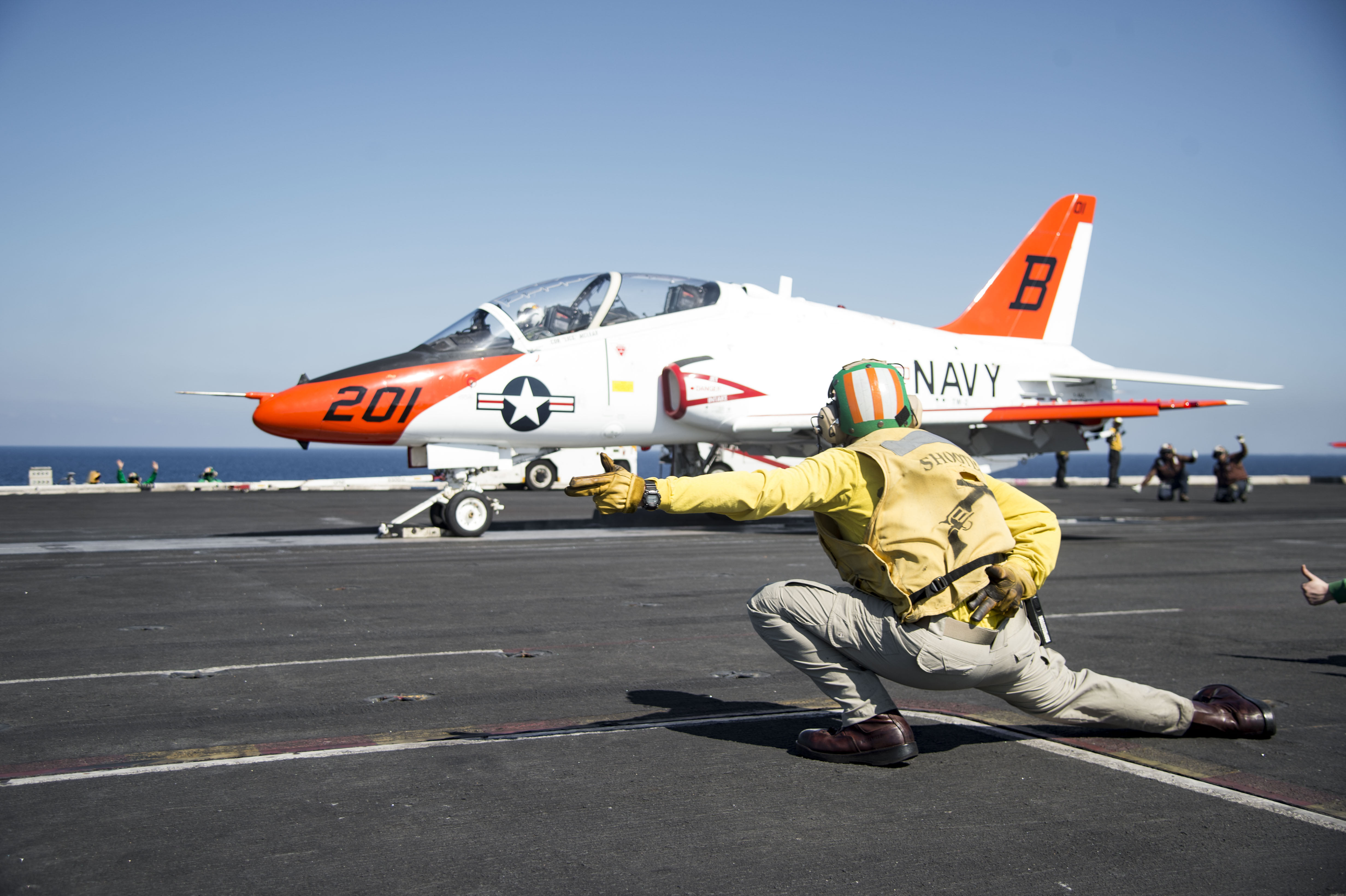
A T-45C Goshawk training aircraft assigned to Carrier Training Wing (CTW) 2 launches from the flight deck of the aircraft carrier USS Dwight D. Eisenhower (CVN-69) on Feb. 9, 2017. US Navy photo.
Stopping the spread of COVID-19 in the Navy requires best practices not that aren’t always conducive to pilot training — training the service says it can’t afford to slow down.
The Chief of Naval Air Training (CNATRA) is left balancing aviator and training command personnel health with the Navy’s ongoing work reducing a pilot shortage and ensuring the force’s long-term readiness needs are met.
CNATRA’s leadership is attempting to mitigate risks to pilot health while not risking the effectiveness of aviation training, Lt. Michelle Tucker, a spokesperson for CNATRA told USNI News in an email.
“CNATRA’s mission remains critical to the defense of our nation and as such, we will continue operations while mitigating risk in compliance with DoD, Navy, and CDC guidance, including carrier qualification (CQ) detachments,” Tucker said. “CQ detachments are a critical component of strike and E-2/C-2 aviator production. They prepare student naval aviators to execute fleet missions from and at sea.”
New aviation students are continuing to enter the training pipeline. Commands are encouraging social distancing practices, including using flexible work schedules and telework options. However, social distancing practices are tough to employ in aircraft cockpits, so equipment is frequently cleaned, Tucker said. Foreign military aviation students enrolled in the training pipeline are continuing to train.
“All surfaces including simulator and aircraft controls, helmets, masks, and headsets, etc. are being sterilized with disinfectant before and after each use,” Tucker said.
The Navy doesn’t have much of a margin when it comes to considering delaying aviation training. In 2019, the Navy was on track to meet its annual target of producing 1,100 aviators, after years of falling short of this goal, according to a 2019 Department of Defense report to Congressional Armed Services Committees about the Pentagon’s efforts to mitigate pilot shortages.
CNATRA’s training has the added challenge of navigating the Department of Defense’s stop movement orders, put in place to slow the spread of COVID-19. Flying aircraft is an integral part of flight training and this often involves flying from training bases to other locations, including civilian airports.
“Depending on the flight profile, that could include touch-and-go landings or actual landings at civilian airports,” Tucker said. “Our members are minimizing contact with staff at those civilian facilities in order to decrease the spread of any virus.”
The training also involves learning how to perform catapult launches and arrested landings on aircraft carriers, after students complete intermediate jet training and advanced phase training. The advanced phase includes manual air-to-ground bombing, tactical formation, air combat maneuvering and operational navigation at low altitude.
Before heading out to land on an aircraft carrier, students first complete field carrier landing practice. This occurs on land, on runways designed to mimic a carrier’s flight deck, but doesn’t replace the carrier qualification.
“There is no substitute for an aircraft carrier’s pitch and roll and the challenges it presents during landing,” Tucker said. “CQ detachments will include the minimum number of personnel to execute safe and efficient operations in order to reduce the number of travelers and potential spread of any virus.”
